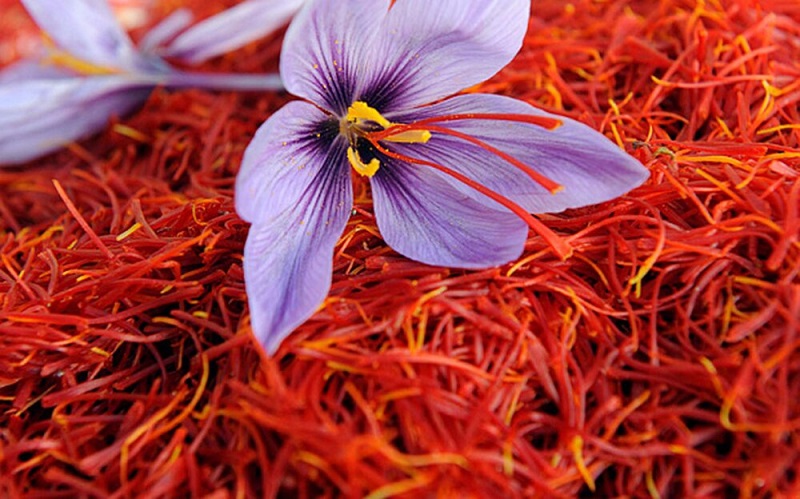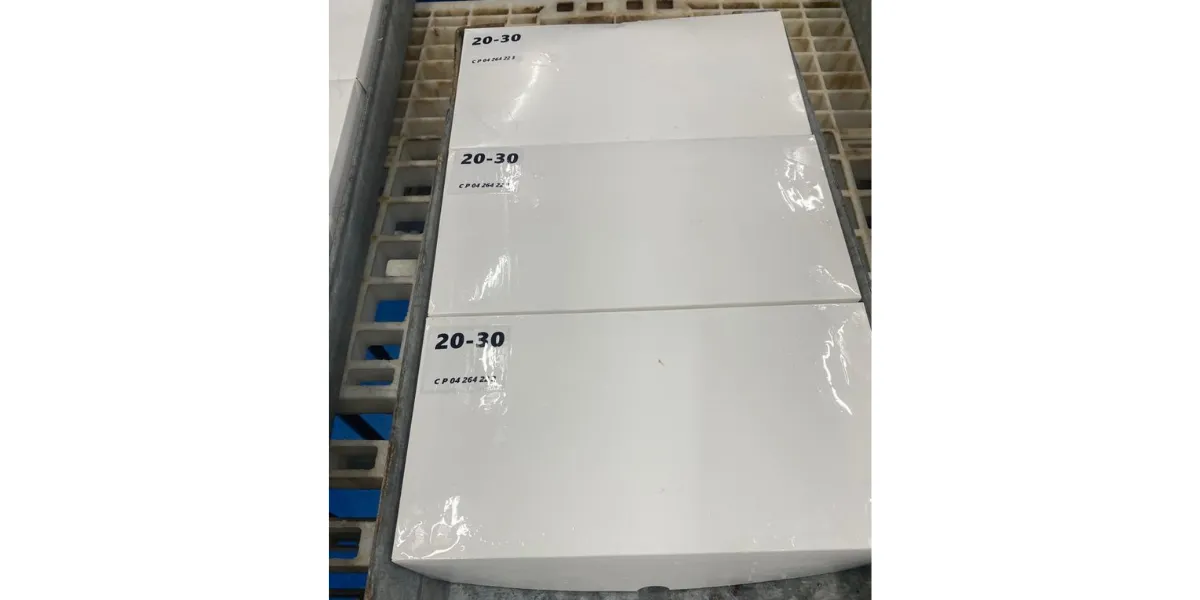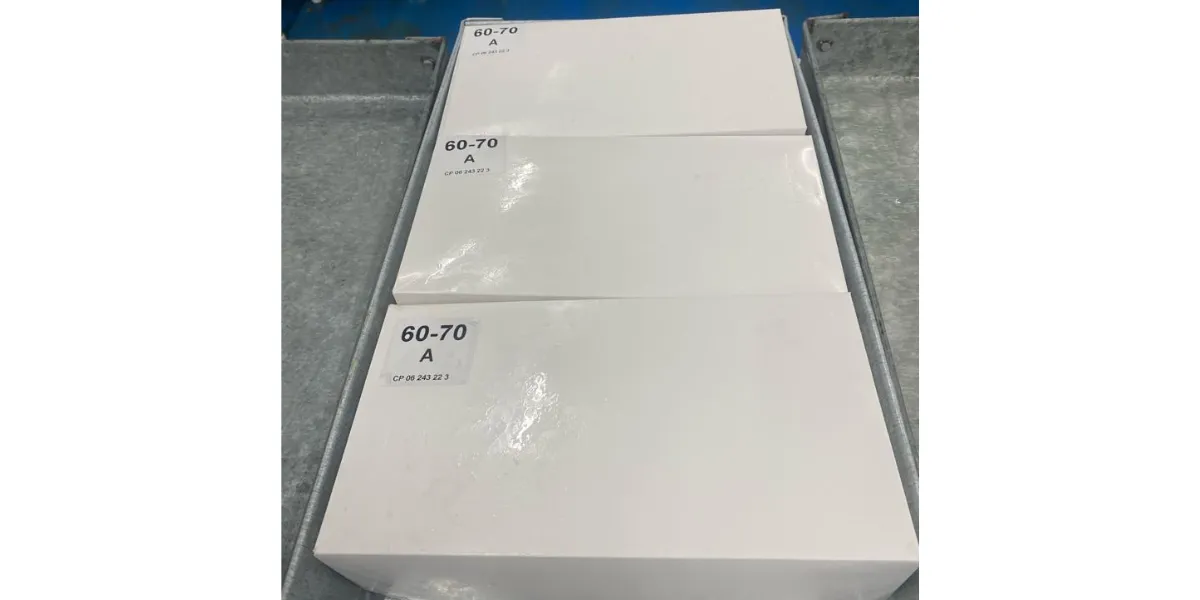Saffron is more than just a spice—it’s a symbol of luxury, tradition, and wellness. Known as “red gold,” this rare and precious ingredient has been cultivated for centuries, but no country produces saffron quite like Iran. With its deep crimson threads, intoxicating aroma, and unmatched potency, Iranian saffron is the purest and most sought-after in the world.
What makes Iranian saffron superior? It’s a combination of science, tradition, and climate. The soil, altitude, and arid conditions of Iran create the ideal environment for saffron crocus flowers to flourish, producing stigmas rich in powerful bioactive compounds. These compounds—crocin, picrocrocin, and safranal—are responsible for saffron’s brilliant color, delicate flavor, and therapeutic properties.
Beyond its culinary appeal, saffron has been revered for its medicinal benefits. Ancient Persian healers used it as a natural remedy for stress, depression, and inflammation. Today, modern research confirms that saffron can boost mood, enhance memory, and support overall health. Its antioxidant properties make it a valuable ingredient in both traditional medicine and cutting-edge skincare.
But not all saffron is created equal. With counterfeit and low-grade saffron flooding the market, knowing how to distinguish pure Iranian saffron from imitations is essential. Understanding saffron’s grading system, testing its authenticity, and learning how to use it properly will ensure you experience its full benefits.
In this guide, we’ll explore everything that makes Iranian saffron unique. From its rich chemical composition to its health-boosting effects, you’ll discover why this spice remains unrivaled. Stay with us to unlock the secrets of the world’s best saffron.
Iranian Saffron: The Purest and Most Powerful Spice in the World
Iranian Saffron stands at the pinnacle of quality and effectiveness. Its superiority lies in its rich composition, with higher concentrations of crocin, safranal, and picrocrocin than any other saffron-producing region. These three compounds define saffron’s essence—its deep golden hue, its captivating aroma, and its slightly bitter yet luxurious taste.
Crocin is responsible for the intense color of Iranian saffron, making it a powerful natural dye and antioxidant. This compound has been studied for its potential neuroprotective effects, aiding cognitive function and memory retention. Research suggests that crocin may even help protect against neurodegenerative diseases.
Safranal is the reason behind saffron’s mesmerizing fragrance. This volatile compound plays a significant role in mood enhancement and stress relief. Studies indicate that safranal has antidepressant properties, making saffron a natural mood booster and a potential alternative treatment for mild to moderate depression.
Picrocrocin gives saffron its characteristic taste—a balance of sweetness and bitterness that elevates culinary experiences. It also contributes to saffron’s medicinal benefits, including digestive support and appetite regulation.
Iran’s saffron cultivation methods ensure these compounds remain potent. The delicate hand-harvesting process, precise drying techniques, and optimal storage conditions all preserve the integrity of saffron’s bioactive elements. The result? A spice that delivers maximum flavor, fragrance, and health benefits.
Beyond its chemical richness, Iranian saffron is revered for its versatility. It is used in a variety of applications, from gourmet cooking and herbal teas to skincare and traditional medicine. Its powerful antioxidants make it a valuable ingredient in anti-aging treatments, helping to protect skin from oxidative stress and environmental damage.
With its unmatched purity and potency, Iranian saffron continues to be the gold standard. Understanding its composition and benefits allows you to fully appreciate why this spice is considered the best in the world.

The Healing Power of Saffron: Ancient Wisdom Meets Modern Science
Saffron has been used as a natural remedy for centuries, but modern research has uncovered just how powerful this spice truly is. Packed with bioactive compounds, Iranian saffron offers a range of health benefits, from mood enhancement to cognitive support. (Top 5 Health Benefits of Saffron You Need to Know)
One of saffron’s most well-documented effects is its ability to improve mental health. Several clinical studies have shown that saffron can alleviate symptoms of depression and anxiety by increasing serotonin levels in the brain. Unlike synthetic antidepressants, saffron provides a natural mood boost without the risk of side effects.
Saffron is also a potent cognitive enhancer. Research suggests that it may help improve memory and learning abilities, making it a promising supplement for brain health. Some studies even indicate that saffron could slow the progression of Alzheimer’s disease by protecting brain cells from oxidative damage.
In addition to its neurological benefits, saffron supports heart health. Its anti-inflammatory and antioxidant properties help reduce blood pressure and improve circulation. Regular consumption of saffron has been linked to better cardiovascular function, making it an excellent addition to a heart-healthy diet.
Another remarkable aspect of saffron is its role in eye health. Crocin, one of saffron’s key compounds, has been found to protect retinal cells from degeneration, potentially preventing age-related vision loss. Clinical trials suggest that saffron supplementation can enhance visual acuity and slow the progression of conditions like macular degeneration.
Saffron’s anti-inflammatory effects also extend to digestive health. It has been traditionally used to ease stomach discomfort, reduce bloating, and support liver function. By promoting gut balance and reducing inflammation, saffron contributes to overall digestive wellness.
Iranian saffron is not just a luxurious spice—it’s a scientifically backed superfood with a range of therapeutic benefits. Whether consumed as a tea, added to meals, or taken as a supplement, it has the power to enhance both physical and mental well-being.
Culinary Uses of Iranian Saffron: Elevating Global Cuisine
Iranian saffron, often referred to as “red gold,” holds a prestigious place in kitchens worldwide. Its unique flavor, aroma, and vibrant color make it an indispensable ingredient in various culinary traditions.
Persian Cuisine:
In Iran, saffron is integral to many traditional dishes. Chelo Kebab, the national dish, features saffron-infused basmati rice served alongside grilled meats. Tahdig, the crispy rice crust at the bottom of the pot, owes its golden hue and rich flavor to saffron. Desserts like Sholeh Zard, a sweet rice pudding, are also enriched with saffron, providing a distinctive taste and color.
Indian Cuisine:
In India, saffron is a key component in both savory and sweet dishes. Biryani, a layered rice dish with meat or vegetables, is elevated with saffron’s aroma and color. Kesar Peda and Kheer, popular sweets, incorporate saffron to enhance flavor and appearance.
European Cuisine:
European chefs utilize saffron in various recipes. Risotto alla Milanese, a classic Italian dish, relies on saffron for its characteristic color and taste. In Spain, Paella combines saffron with rice, seafood, and meats, creating a dish celebrated for its depth of flavor. 
Middle Eastern Cuisine:
Saffron is prevalent in Middle Eastern dishes such as Moroccan Tagines, where it complements spices like cinnamon and cumin. Saffron Tea is also a popular beverage, appreciated for its soothing properties.
Culinary Benefits:
Beyond flavor and color, saffron offers health benefits. It contains antioxidants, supports digestion, and may improve mood. Its versatility allows chefs to experiment across various cuisines, making it a cherished spice globally.
Read more: Why Is Persian Saffron So Expensive?

Harvesting Techniques: How Iranian Farmers Preserve Saffron’s Quality
The quality of saffron heavily depends on meticulous harvesting techniques, and Iranian farmers have perfected this art over centuries.
Hand-Picking:
Saffron crocus flowers bloom briefly in autumn. Iranian farmers hand-pick these delicate flowers at dawn to prevent wilting and preserve their potency. This labor-intensive process ensures that only the best flowers are selected.
Stigma Separation:
After harvesting, the crimson stigmas are carefully separated from the flowers. Precision during this step is crucial to maintain the saffron’s integrity and quality.
Drying Process:
The stigmas are then dried using traditional methods, such as toasting over low heat or air-drying in dark rooms. Proper drying is vital to enhance saffron’s shelf life and concentrate its flavor and aroma.
Storage:
Once dried, saffron is stored in airtight containers, protected from light and moisture. This careful storage prevents degradation and preserves its quality until it reaches consumers.
Sustainability:
Iranian farmers employ sustainable practices, including crop rotation and organic farming, to maintain soil health and ensure the longevity of saffron cultivation.
Saffron’s Role in Traditional Medicine: A Natural Remedy
Saffron has been utilized in traditional medicine for centuries, offering various health benefits.
Mood Enhancement:
Saffron is known for its antidepressant properties. Compounds like crocin and safranal influence serotonin levels, potentially alleviating symptoms of depression and anxiety.
Antioxidant Properties:
Rich in antioxidants, saffron combats oxidative stress, protecting cells from damage and reducing inflammation.
Digestive Health:
Saffron aids digestion by stimulating appetite and reducing gastric acidity. It’s traditionally used to treat stomach ailments and improve overall digestive function.
Menstrual Relief:
In traditional practices, saffron is used to alleviate menstrual discomfort and regulate cycles, providing relief from cramps and mood swings.
Vision Improvement:
Recent studies suggest saffron may improve vision in adults with age-related macular degeneration by protecting retinal cells from damage.
Cognitive Benefits:
Saffron’s neuroprotective properties may enhance memory and learning, offering potential benefits for cognitive health.
Usage:
Saffron can be consumed as a tea, in supplements, or incorporated into meals, making it a versatile natural remedy.
How to Spot Fake Saffron? A Buyer’s Guide
Comparing Iranian Saffron to Other Varieties: What Sets It Apart
Iranian saffron is often considered superior to other varieties due to several distinguishing factors.
Chemical Composition:
Iranian saffron contains higher concentrations of crocin, picrocrocin, and safranal, responsible for its intense color, flavor, and aroma. This richness enhances both culinary and medicinal applications.
Climate and Soil:
Iran’s unique climate and soil conditions contribute to the high quality of its saffron. The combination of arid weather, well-drained soil, and optimal altitude creates ideal growing conditions.
Traditional Harvesting:
The meticulous hand-harvesting and drying techniques preserve the saffron’s potency, setting Iranian saffron apart from mechanically processed varieties.
Global Recognition:
Iranian saffron’s superior quality has earned it a reputable position in international markets, often preferred by chefs and consumers worldwide.
Comparison with Spanish Saffron:
While Spanish saffron is also esteemed, it typically has a milder flavor and lighter color compared to the robust characteristics of Iranian saffron.
Economic Impact:
Iran’s dominance in saffron production supports local economies and preserves cultural heritage, further solidifying its global standing.
The Economic Importance of Saffron in Iran: Supporting Communities and Agriculture
Saffron is more than just a spice in Iran—it is an economic lifeline for thousands of families, particularly in rural areas. As the world’s largest producer of saffron, Iran dominates over 90% of global saffron production, making it a critical driver of the country’s agricultural economy.
Employment and Rural Livelihoods
Saffron farming provides employment for hundreds of thousands of Iranian farmers, especially in provinces like Khorasan Razavi, South Khorasan, and Kerman. Since saffron cultivation is highly labor-intensive, it creates seasonal jobs for women and small-scale farmers, ensuring a source of income in areas where few other economic opportunities exist. The process of planting, hand-picking, and drying saffron requires skilled labor, supporting entire communities.
Saffron’s Role in Iran’s Agricultural Exports
Iran exports saffron to over 50 countries, including Spain, China, the UAE, and India. The country’s dominance in saffron production makes it a key player in the global spice trade. However, due to international sanctions and trade restrictions, much of Iran’s saffron is exported under other countries’ labels, reducing its direct profit potential.
A High-Value, Low-Water Crop
Saffron cultivation is particularly important in Iran due to its low water requirements. Given the country’s ongoing water scarcity issues, saffron serves as a sustainable agricultural product compared to other water-intensive crops like wheat or rice. With proper investment in irrigation techniques, saffron farming could expand further and enhance Iran’s agricultural sustainability.
Challenges and Future Outlook
Despite its dominance in production, Iran faces challenges such as competition from emerging saffron producers like Afghanistan and Spain, fluctuations in global market demand, and smuggling issues. Efforts to improve branding, quality control, and direct exports can help Iran maintain its competitive edge.
Saffron is not just a cultural treasure in Iran; it is an economic powerhouse that sustains thousands of livelihoods. With better trade policies, investment in organic farming, and direct market access, the Iranian saffron industry has the potential to grow even stronger.
The Future of Iranian Saffron: Sustainability and Innovation
As the global demand for saffron continues to rise, Iran faces both opportunities and challenges in maintaining its position as the world’s leading saffron producer. Sustainability, innovation, and technology will be key factors in securing the future of Iranian saffron.
Climate Change and Water Scarcity
One of the biggest threats to saffron farming in Iran is climate change. Rising temperatures and prolonged droughts threaten the productivity of saffron farms, especially in key growing regions. Since saffron is cultivated in semi-arid areas, efficient irrigation systems, water-saving technologies, and soil conservation will be crucial for the industry’s survival.
Organic and Sustainable Farming Practices
There is a growing global preference for organic saffron, which commands higher prices in international markets. Iranian farmers are increasingly adopting organic farming methods, including natural fertilizers, non-chemical pest control, and improved crop rotation strategies to enhance soil quality. These steps will improve Iran’s global competitiveness and attract premium buyers.
Advanced Processing and Quality Control
Innovation in drying, packaging, and quality control can further elevate Iran’s saffron industry. Implementing modern laboratory testing for crocin levels, purity verification, and better packaging solutions will help Iranian saffron maintain its superior reputation. Investing in AI-driven quality inspection can also ensure consistency in saffron grading.
Global Branding and Direct Export Strategies
One of the challenges Iran faces is that much of its saffron is re-exported by other countries, particularly Spain and the UAE, under their own labels. Strengthening direct international trade agreements and improving Iranian saffron branding will help Iranian farmers and businesses benefit more from their world-class product.
The Role of Technology in Saffron Farming
Emerging technologies like precision agriculture, smart irrigation systems, and blockchain-based saffron tracking are already making an impact on the industry. These innovations will help Iranian saffron farmers optimize production, reduce waste, and ensure better traceability for international buyers.
Iranian saffron has stood the test of time for centuries. With the right investments in sustainable farming, scientific advancements, and global marketing strategies, Iran will continue to dominate the saffron industry while ensuring the long-term sustainability of this invaluable spice.
Why Iranian Saffron Reigns Supreme
Iranian saffron is more than just a culinary ingredient—it’s a treasure trove of health benefits, backed by centuries of tradition and modern science. Its unparalleled quality, rich bioactive compounds, and therapeutic properties make it the most sought-after saffron in the world.
From its vivid color and distinctive aroma to its scientifically proven health benefits, every aspect of Iranian saffron speaks to its superiority. The meticulous hand-harvesting process, optimal growing conditions, and high concentration of active compounds ensure that no other saffron can match its potency.
Whether you’re using saffron for cooking, skincare, or wellness, choosing the highest-quality saffron is essential. Iranian saffron delivers purity, authenticity, and effectiveness, making it the ultimate choice for those who seek the best.
By understanding what makes Iranian saffron unique, you can fully appreciate its value and harness its benefits in your daily life. Explore its rich history, experience its powerful effects, and elevate your well-being with the finest saffron in the world.




